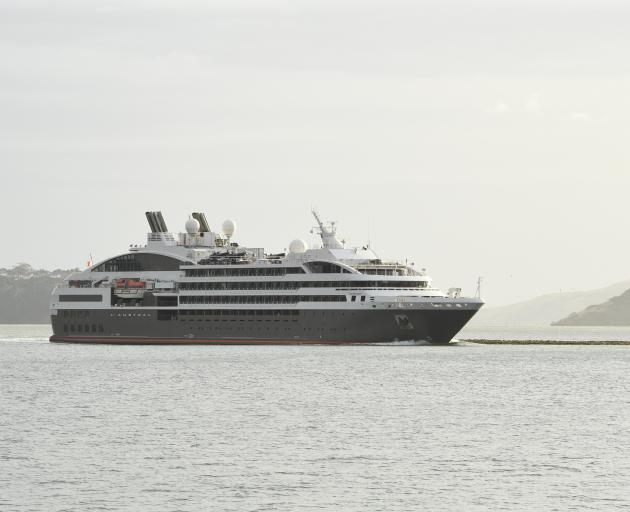
Two of the incidents involved the same luxury cruise ship and happened within a month of each other.
"The commission has recently inquired into several incidents where errors occurred due in part to not meeting international standards for what should happen on the bridge of a ship," TAIC chief commissioner Jane Meares said today.
"Errors in navigation in pilotage waters carry the risk of serious consequences for people, the environment, and the economy."
Pilotage waters are areas where, with a few exemptions, ships must use the services of a maritime pilot - an experienced and highly skilled sailor with detailed knowledge of a particular waterway.
The specific issue of ships navigating in pilotage waters is what is being added to the watchlist.
TAIC's watchlist identifies issues considered to be of "the highest order of importance for transport safety" and encourages regulators, operators, the Government, and people involved in transport every day to mitigate transport-related concerns.
Meares said failures with the bridge team communicating or sharing knowledge had been identified in all four of the recent incidents they investigated.
French cruise company Compagnie du Ponant and captain Regis Daumesnil were fined in the Wellington District Court earlier this month over one of the incidents, where the cruise ship L'Austral hit an uncharted rock in the remote New Zealand subantarctic islands.
The company was fined $70,000 for endangering human life and entering a prohibited zone, while the captain was fined $30,000.
While a pilot was not needed on board, poor management of the bridge's resources and the operation of the electronic chart display and information system were identified as issues.
"Even though the electronic chart system was the primary means of navigation, the crew wasn't full familiar with what it could and couldn't do," Meares said.
Just four weeks later, L'Austral was entering the Milford Sound at night, this time with a pilot, when the pilot lost situational awareness, allowing the ship to strike a stony bank near the base of Milford Peak.
"The commission found that the bridge team was not making full use of the ship's electronic navigation systems to stay on track. When they noticed the ship was off track, they didn't tell the pilot until it was too late."
Another cruise ship, Azamara Quest, hit Wheki Rock in Tory Channel in early 2016 because the bridge team and pilot had no shared understanding of the plan for the ship to make a turn into the channel, or the influence of the tide.
The fourth incident involved bulk carrier the Molly Manx, which ran aground in Otago Harbour because the bridge team had not adequately monitored the ship's progress.
"The phenomenon of bridge resource management not meeting international standards is a safety issue that demands the immediate attention of regulators, operators, and training providers."
None of the incidents resulted in serious injury or damage, all could have had serious consequences, Meares said.
The inquiries featured miscommunication and a lack of common understanding among the bridge management team, and poor integration of pilots into the bridge team.
TAIC has made recommendations about improving standards of pilotage, improving standards of voyage planning, bridge resource management, and about the training and use of electronic chart display and information systems.
International agencies have also identified pilotage as a safety issue.












